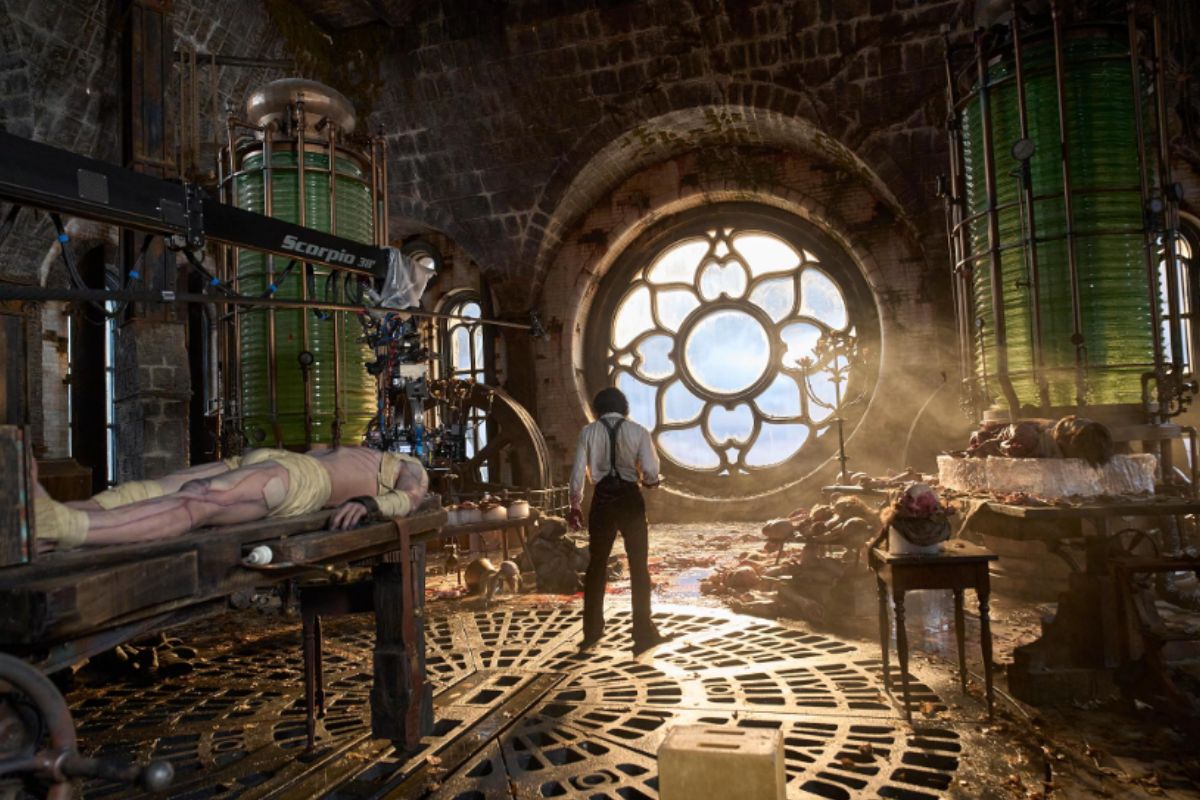
Published: : November 9, 2025, 05:54 PM

In his long-awaited adaptation of Mary Shelley’s classic, Guillermo del Toro transforms a tale of horror into a meditation on creation, guilt, and the divine spark of compassion.
There are subjects that can be accessed like sediments of a collective consciousness. They cannot be reinvented – only revived. And who better to do so than Guillermo del Toro, the great restorer of monsters, the anthropologist of otherness? Even with his Pinocchio (2022) one wondered why another version of this dead-on fairy tale by Italian author Carlo Collodi was needed – until del Toro proved us wrong. Now comes Frankenstein, based on Mary Shelley’s 1818 novel Frankenstein; or, The Modern Prometheus A motif that seems to have been exhausted, over-staged, quoted and parodied like no other. And yet del Toro achieves something very surprising: he reanimates not only the monster, but the myth itself.
Film history counts over a hundred cinematic adaptations, from the first, barely twelve-minute-long Edison version from 1910 to James Whale’s canonical Frankenstein film adaptation from 1931 with Boris Karloff as the iconic creature, to Kenneth Branagh’s baroque, hyperventilating 1994 adaptation of Mary Shelley’s Frankenstein. Add to that the British Hammer era with Peter Cushing and Christopher Lee, Mel Brook`s bizarre parody Young Frankenstein (1974) and the countless travesties, remakes and animations, right up to Tim Burton’s melancholic Frankenweenie. Even Yorgos Lanthimo`s Poor Things, with its grotesque parable of emancipation, has recently given the Frankenstein myth a feminist update. One might have thought that the final nail in the coffin had been hammered in.
But del Toro is patient. Since 2007, he has dreamed of adapting Shelley’s novel for the screen. He waited for the ‘right circumstances,’ for the mature work, for the necessary emotional urgency. Now, almost two decades later, that dream has become reality. And just as Pinocchio is no longer a children’s book adaptation for del Toro, del Toro’s Frankenstein is no longer a horror film in the classic sense, but a Miltonian tragedy, as del Toro himself says – a religious, deeply personal work of confession about creation, guilt and shame.
Oscar Isaac plays Victor Frankenstein as a manic-sensitive demiurge who does not want to change the world, but to defeat death. His laboratory is both a cathedral and a torture chamber, a place of transcendence where man plays God or challenges him. Christoph Waltz plays Heinrich Harlander, the wealthy patron who finances Frankenstein’s experiments – a cold cynic with the unshakeable self-assurance of those who believe their money can buy immortality. Del Toro builds an astonishingly contemporary bridge here: Harlander is the prototype of Musk’s Silicon Valley billionaire, who has his own future bred in the laboratory. Artificial intelligence thus becomes the moral continuation of Frankenstein’s hubris – the old dream of eternal life in its digital form. But of course these are only moments, and del Toro returns just as quickly from the future to land back in his manic-depressive, almost dark-romance-like illuminated past of the mid-19th century, which of course is just as far removed from the original narratively as he already did in Pinocchio.
The monster, for example, embodied by Jacob Elordi with almost biblical grace, is not merely a monster, but a sensitive being who experiences his own creation as a metaphysical trauma. His birth is a crucifixion, his awakening a moment of resurrection: between Christ-like pose, flashbulbs and machine-gun thunder. Del Toro choreographs this moment as a sacred spectacle. While the storm rages outside, the body rises in a choreography of pain and light – a macabre yet tender dance of life.
A little later comes perhaps the most powerful part of the film: the monster’s second awakening in front of the mirror, its incarnation. A quiet moment, a kind of mirror stage according to Lacan – the creature recognises itself for the first time as a unity, as a self, as a body. Here, del Toro references not only psychoanalysis, but the birth of consciousness itself. And in an instant, we realise that this monster is not only a victim, but also a subject – capable of love, thought and grief.
As Mary Shelley did in her novel, del Toro weaves religious and mythical layers with the dialectic of creator and creature. The dialogues echo lines from John Milton’s Paradise Lost, the work that inspired Shelley herself: ‘The horror of the truth – to be not of the same nature as men.’ The creature is a fallen angel, Lucifer and Adam at the same time, a rebel and a son who longs for his father. Del Toro translates Milton’s themes – rebellion, free will, knowledge and guilt – into a cinematic theology.
Visually, Frankenstein is overwhelming: foggy Europe streaked with storm lights; the blood and corpses of the battlefields where Frankenstein finds his raw materials – accompanied by the eerie, lulling elegance of a waltz dancing over the corpses. Here, one senses del Toro’s obsession with bodies and materiality, with the weight of flesh and metal, with the intersections between Eros and Thanatos.
But despite all this dark beauty, in the last part of del Toro’s adaptation, Frankenstein also becomes a love story – between creator and creature with homoerotic nuances, between father and son, victim and perpetrator. When Elordi and Isaac face each other in the ice (and later on the ship), surrounded by endless white, the metaphysical hunt suddenly becomes a poignant melodrama. Here, del Toro follows Melville’s Moby Dick – Frankenstein’s hunt for his creature mirrors Ahab’s hunt for the whale: a duel with one’s own shadow that can only be resolved in death. A literary motif that, incidentally, appeared at almost exactly the same time as del Toro set the time frame for his story.
Lars Mikkelsen as Captain Anderson frames the story with an expedition to the Arctic, that place of emptiness where man reaches his limits. Del Toro uses this frame narrative almost more convincingly than Shelley in her novel: the ship, frozen in the ice, becomes the stage for the end, but also for forgiveness. When the monster stands in the last light of the sun, tears running down his face, it is no longer Karloff’s silent grief from the 1930s, but a reincarnation – a reminder that even the monster is human and therefore has a future. Self-destruction is no longer necessary.
Mia Goth as Elizabeth Lavenza – who also plays Claire Frankenstein – gives the film a dual feminine perspective. She is lover, mother, echo, ghost. In her, the themes of birth and death, love and sacrifice merge. Del Toro, who has always portrayed the female characters in his films as preservers and knowers, makes her the emotional centre – a quiet counterpoint to Victor’s masculine hubris.
Del Toro’s description of Shelley’s text as ‘religion’ is no pose. In every shot, one senses his reverence for the origin, his love for the stories that made cinema possible in the first place. Frankenstein is therefore not a revival, but a sacrament: a ritual of revival – of the myth, the genre, the belief in the empathy of the monster that ultimately resides in each of us.
What fizzled out in Branagh’s baroque overheating finds an almost liturgical calm in del Toro’s film. He directs with pathos, but a pathos of sincerity, not kitsch. When sun and ice, death and tears collide at the end, it is perhaps del Toro’s most honest moment: the monster cries – and with him, the viewer is finally allowed to cry too. For in this moment, the viewer also realises that Frankenstein is not a horror film, but a film about humanity itself. Guillermo del Toro snatches Frankenstein from the macabre, from horror, and instead creates a story of resurrection. One about creation and its loneliness, about guilt and redemption, about the power of compassion in the face of darkness. A film that brings back what was believed to be dead with electric force – including cinema, which many had declared dead.